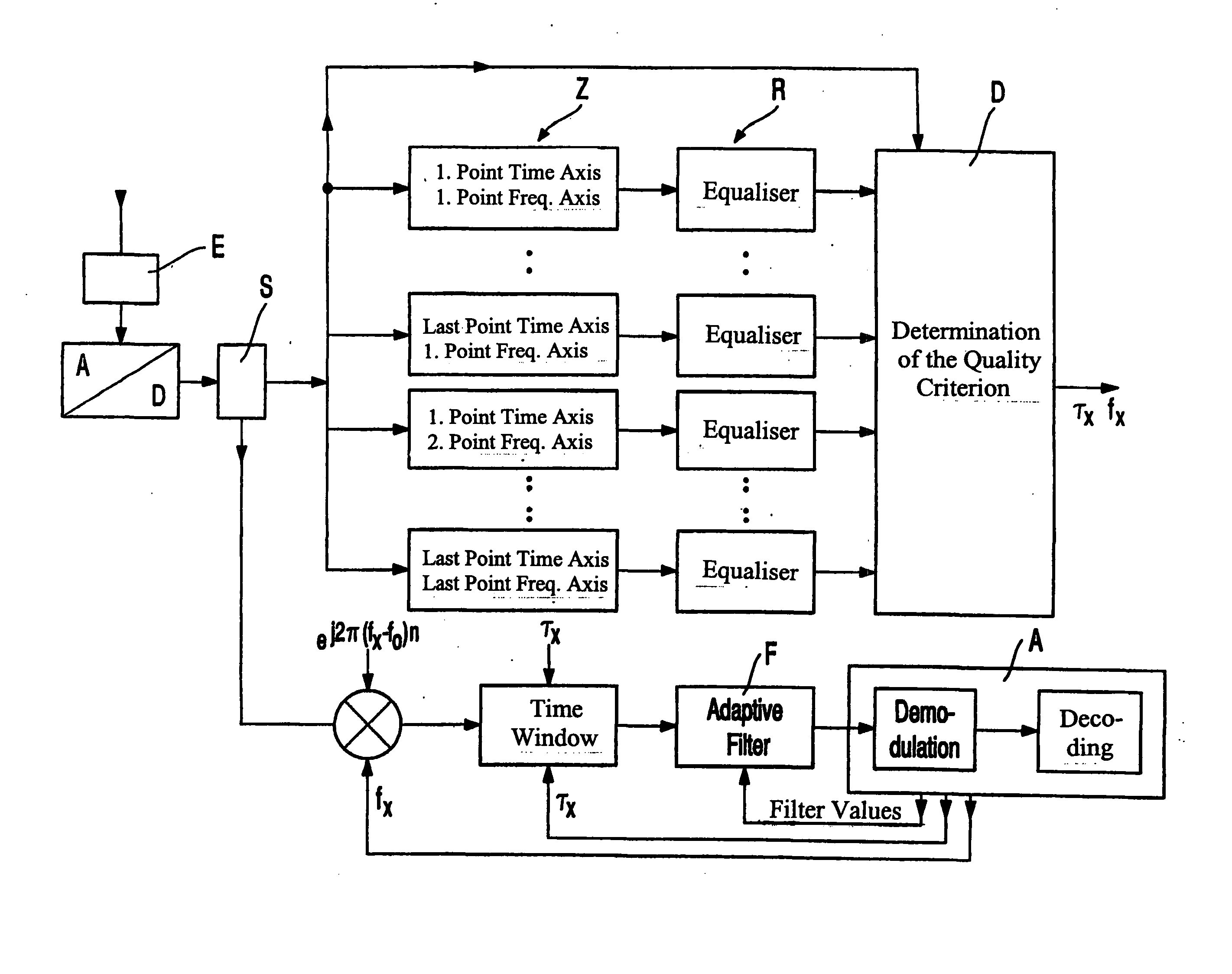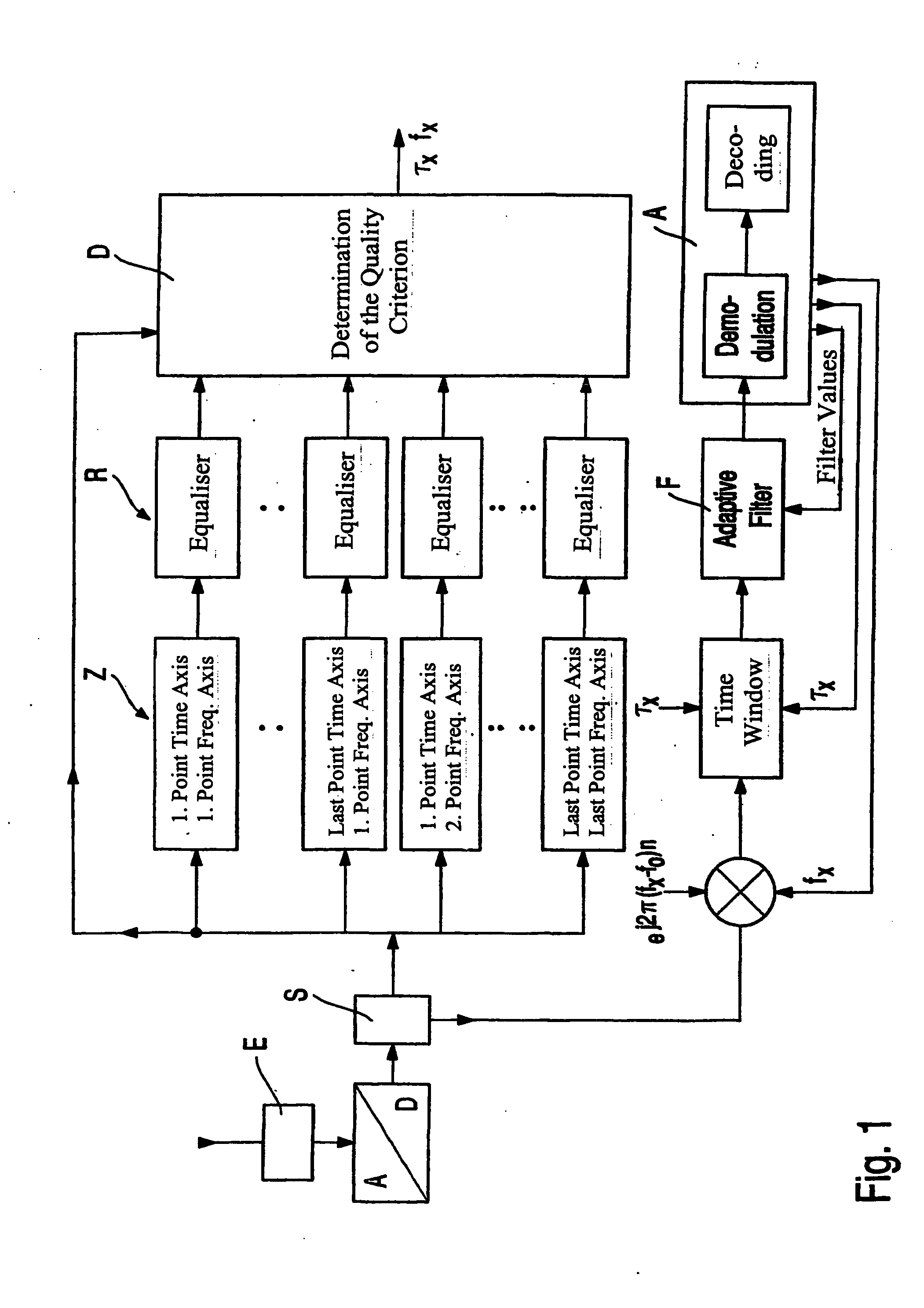Method for the frequency and time synchronization of an odm receiver
a receiver technology, applied in the field of frequency and time synchronization of receivers, can solve the problem of limited computational effort in this contex
- Summary
- Abstract
- Description
- Claims
- Application Information
AI Technical Summary
Benefits of technology
Problems solved by technology
Method used
Image
Examples
Embodiment Construction
[0008] In the transmission channel, the OFDM signal, received and stored in the buffer memory S in at least two successive OFDM blocks, is distorted to a greater or lesser extent. These distortions can have an influence on the two-dimensional search, that is to say, as a result of distortions of this kind, the optimum for the quality criterion can be displaced. It is therefore advantageous to equalize the signal before evaluating the two-dimensional search and determining the quality criterion. For this purpose, equalizers R are provided in each case, as shown in FIG. 1; these are connected downstream of the computer unit D used for determining the quality criterion. In this context, one possibility for equalization is to evaluate the pilot carriers transmitted together with the OFDM signal. These signals are generally used to synchronize the phase thereby allowing coherent demodulation, but in the present case, they can additionally be used for equalization. Because of the known th...
PUM
 Login to View More
Login to View More Abstract
Description
Claims
Application Information
 Login to View More
Login to View More - R&D
- Intellectual Property
- Life Sciences
- Materials
- Tech Scout
- Unparalleled Data Quality
- Higher Quality Content
- 60% Fewer Hallucinations
Browse by: Latest US Patents, China's latest patents, Technical Efficacy Thesaurus, Application Domain, Technology Topic, Popular Technical Reports.
© 2025 PatSnap. All rights reserved.Legal|Privacy policy|Modern Slavery Act Transparency Statement|Sitemap|About US| Contact US: help@patsnap.com



